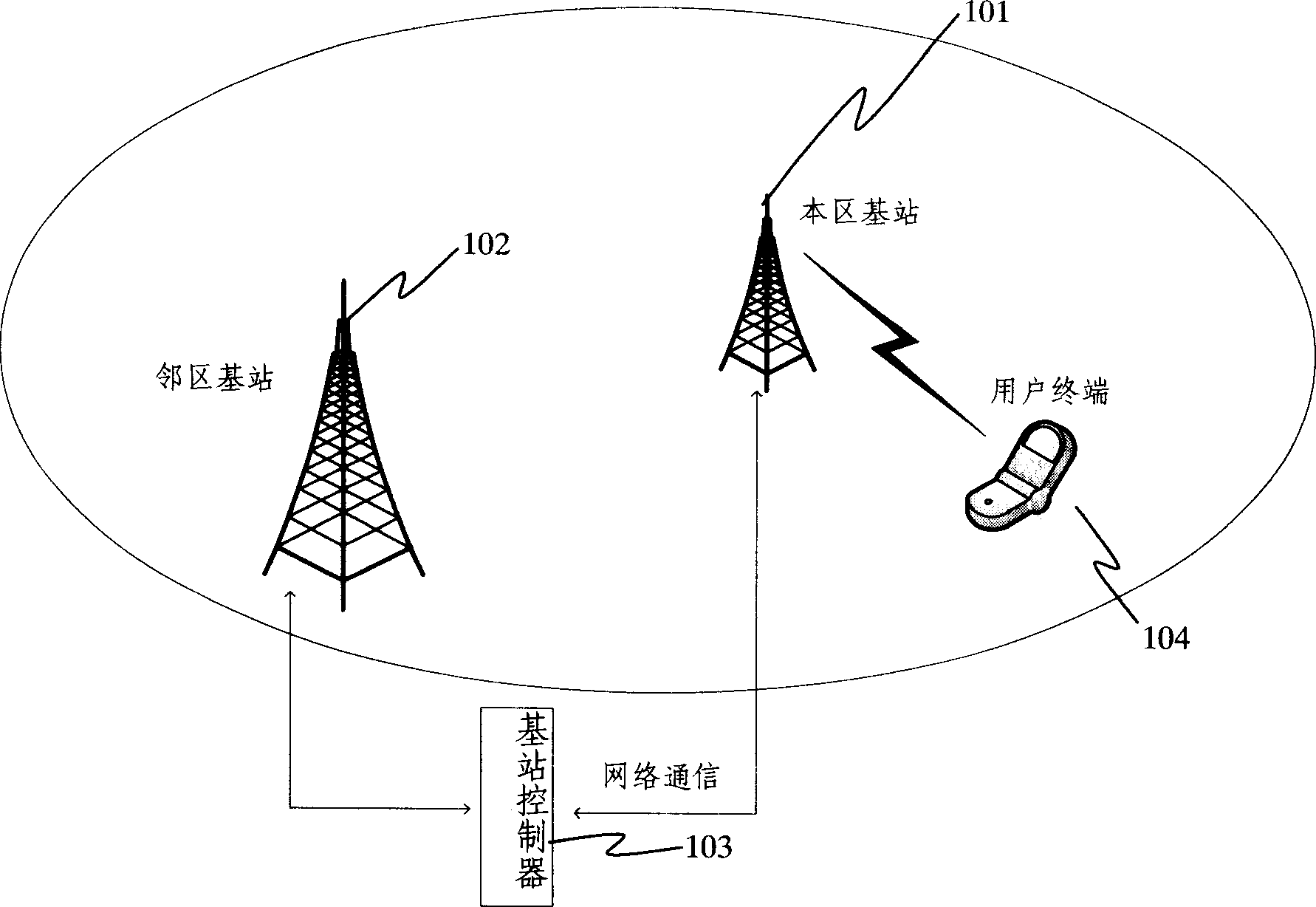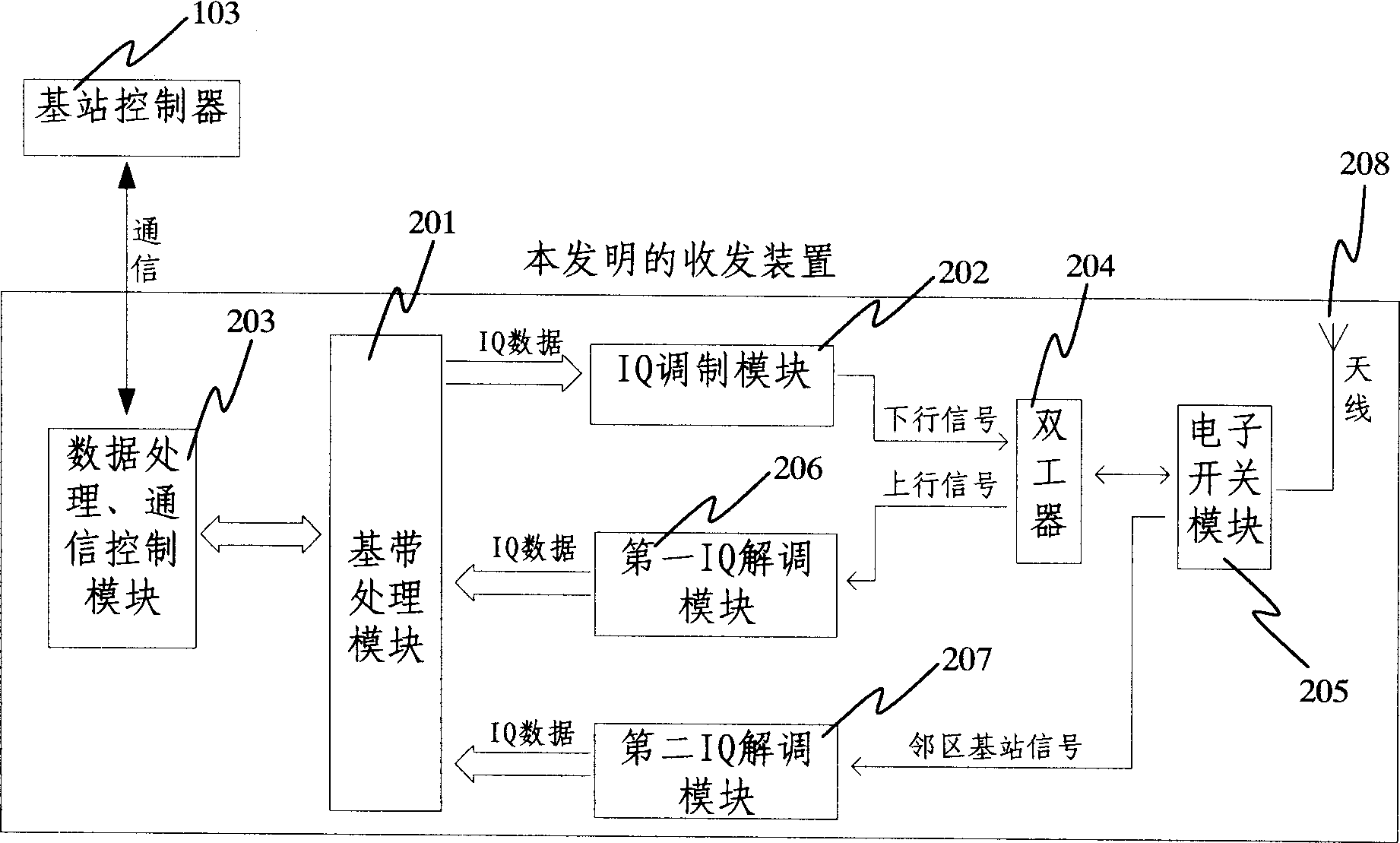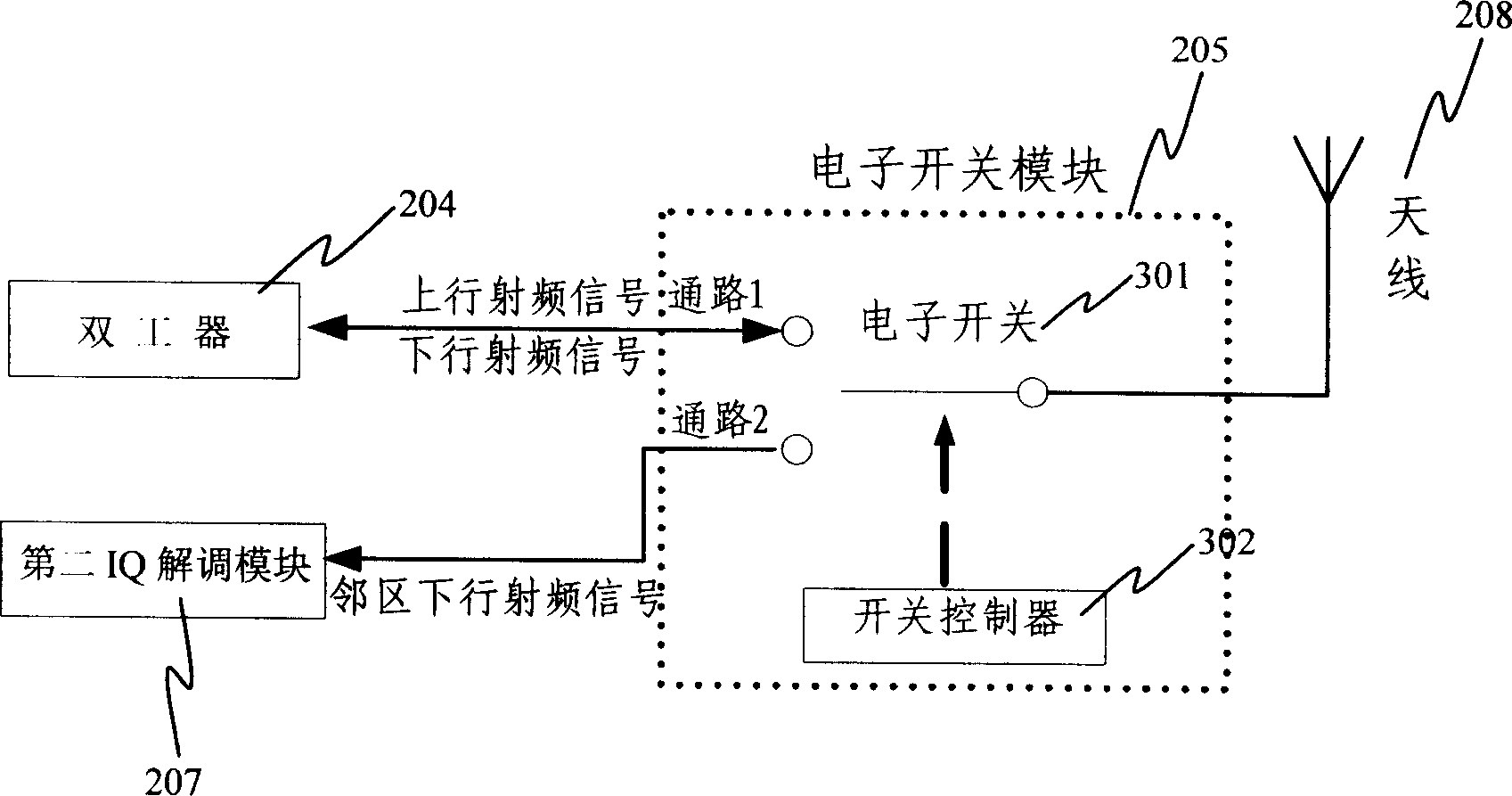Method for obtaining neighbor base station information to realize self-adoptive group network
A technology of neighboring cell base stations and base station information, applied in the field of mobile communication, can solve the problems of the base station being unable to detect, time-consuming and laborious, and unable to detect signals, and achieve the effect of reducing difficulty, low cost, and reducing workload.
- Summary
- Abstract
- Description
- Claims
- Application Information
AI Technical Summary
Problems solved by technology
Method used
Image
Examples
Embodiment Construction
[0028] Below in conjunction with accompanying drawing, take Wideband Code Division Multiple Access (WCDMA) base station system as example the present invention is described in further detail
[0029] The WCDMA mobile communication system uses primary scrambling codes to distinguish cells, downlink uses channelization codes to distinguish physical channels, and uplink uses scrambling codes to distinguish users. To effectively avoid the interference of adjacent cells, a suitable primary scrambling code must be selected. Therefore, for the WCDMA system, the device of the present invention obtains the information function of neighboring cells, which is mainly used for the configuration of the primary scrambling code, and selects a suitable primary scrambling code to configure the base station. The base station communication system with adaptive allocation can be constructed based on the transmission and reception parameters of the given signal; in the area covered by existing signa...
PUM
 Login to View More
Login to View More Abstract
Description
Claims
Application Information
 Login to View More
Login to View More - Generate Ideas
- Intellectual Property
- Life Sciences
- Materials
- Tech Scout
- Unparalleled Data Quality
- Higher Quality Content
- 60% Fewer Hallucinations
Browse by: Latest US Patents, China's latest patents, Technical Efficacy Thesaurus, Application Domain, Technology Topic, Popular Technical Reports.
© 2025 PatSnap. All rights reserved.Legal|Privacy policy|Modern Slavery Act Transparency Statement|Sitemap|About US| Contact US: help@patsnap.com



